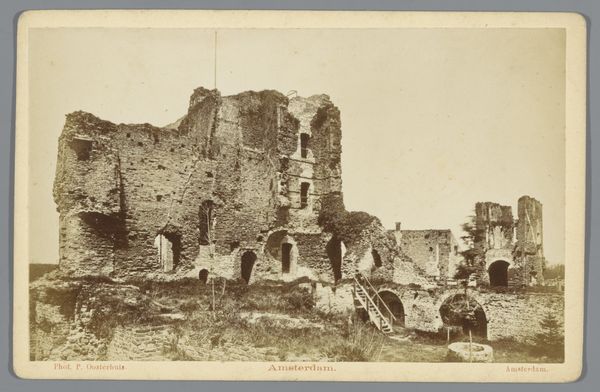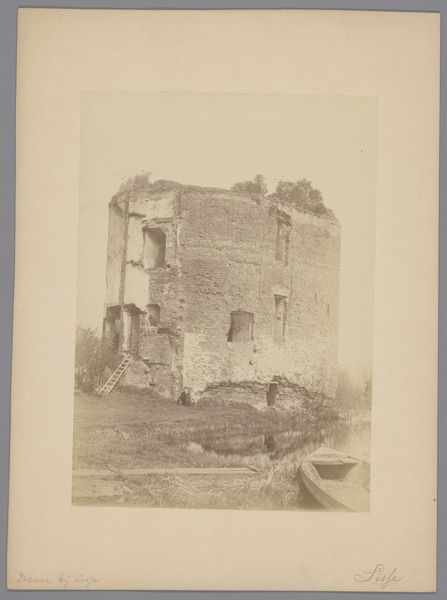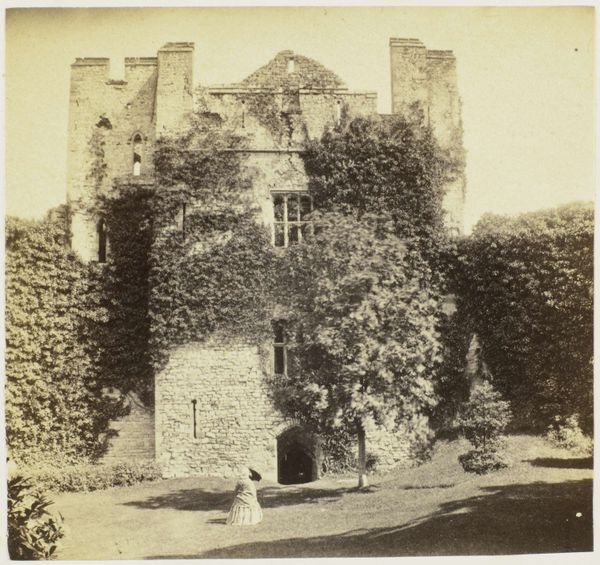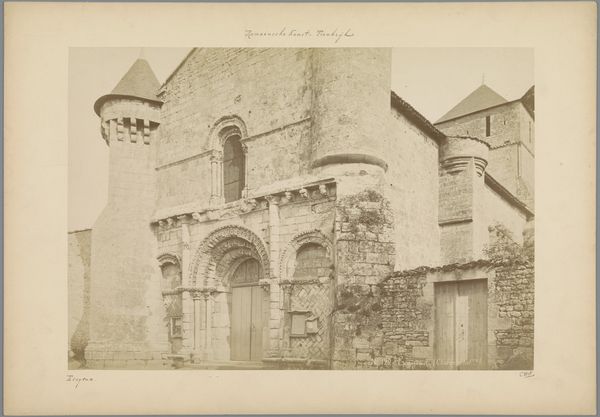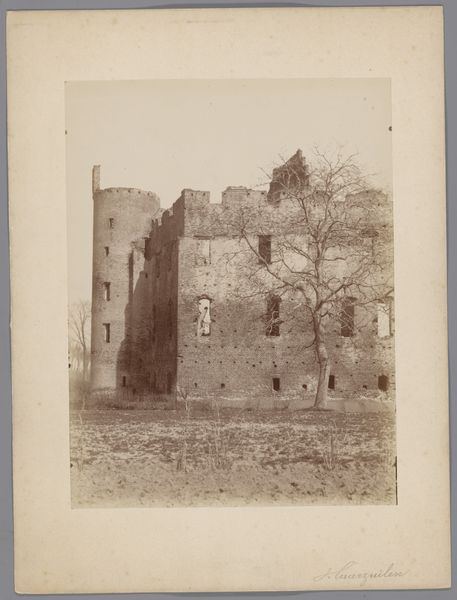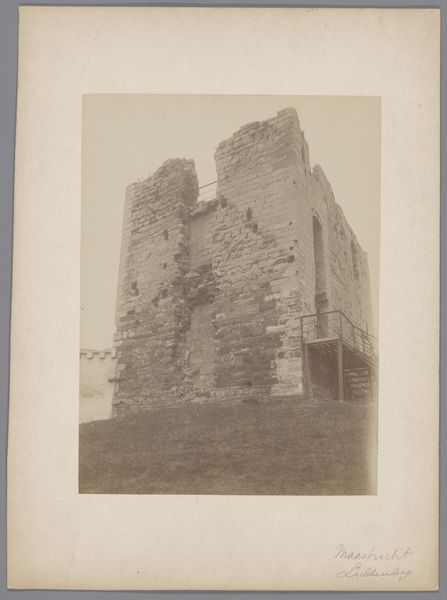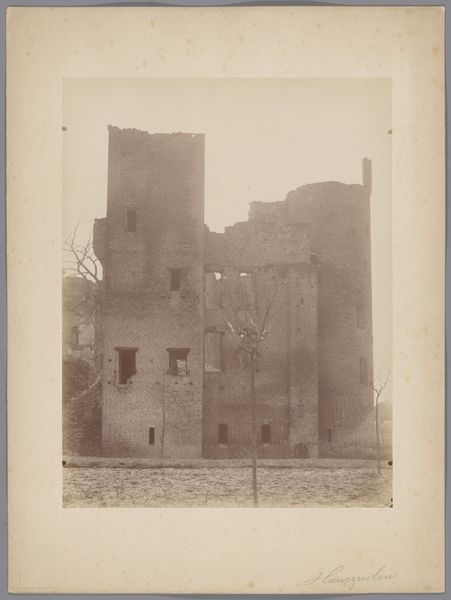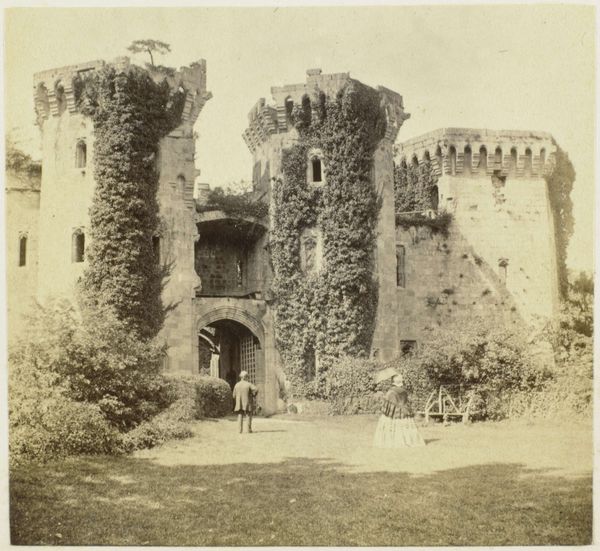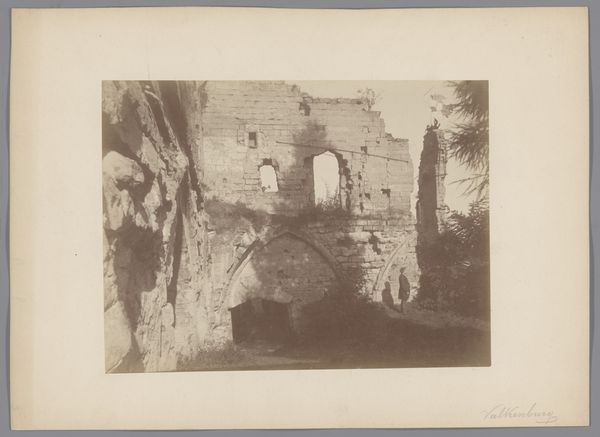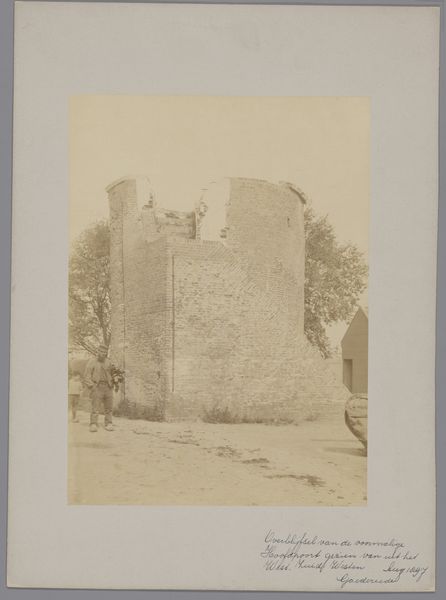
Copyright: Public Domain
Carl Friedrich Mylius captured this view of the Imperial Palace at Gelnhausen using photography, a relatively new medium in the 19th century. Notice how the rough texture and solid form of the stone are rendered through the photographic process. The image captures the weight and permanence of the architecture, while also revealing its decay over time. Photography in this period was a complex process, involving the careful preparation of glass plates coated with light-sensitive emulsion. Each exposure required time and skill, representing a significant investment of labor. This contrasts sharply with the seemingly effortless reproducibility of modern digital photography. Mylius’s work reminds us that even seemingly "mechanical" processes are deeply intertwined with human effort, and embedded in particular social and economic conditions. The act of photographing the Imperial Palace elevates it as an object worthy of artistic attention, blurring the lines between documentation, artistry, and historical preservation. In the end, considering the materials, making, and historical context helps us appreciate the image's significance beyond its mere representation of a place.
Comments
No comments
Be the first to comment and join the conversation on the ultimate creative platform.
